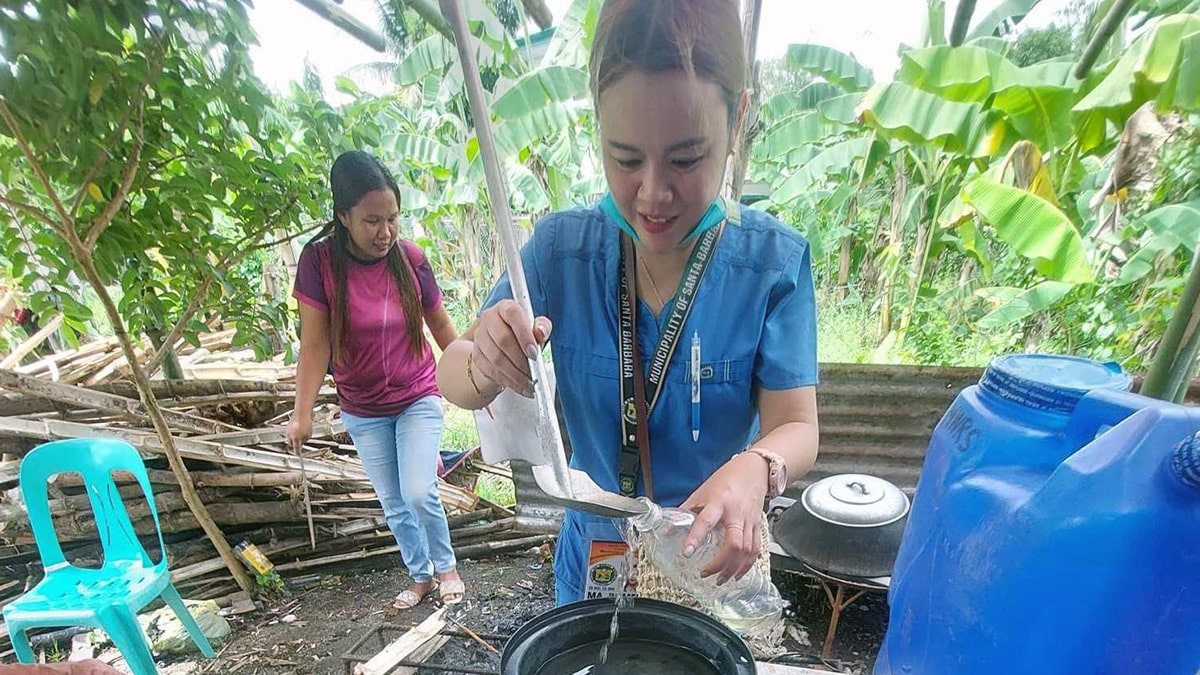
DECLINING TREND. The Iloilo Provincial Health Office conducts sanitary inspection and dengue vector surveillance in Barangay Conaynay, Sta. Barbara on Sept. 4, 2024. Cases of dengue in Iloilo province are declining but the public is encouraged to sustain anti-dengue initiatives especially since cases are still above the outbreak level. (Photo courtesy of IPHO)
DECLINING TREND. The Iloilo Provincial Health Office conducts sanitary inspection and dengue vector surveillance in Barangay Conaynay, Sta. Barbara on Sept. 4, 2024. Cases of dengue in Iloilo province are declining, but the public is encouraged to sustain anti-dengue initiatives, especially since cases are still above the outbreak level. (Photo courtesy of IPHO)
ILOILO CITY — Dengue cases in Iloilo province reached 10,075, with 25 deaths from January to Oct. 5 this year, but on a declining trend, according to the Iloilo Provincial Health Office (IPHO) on Friday.
“Based on the dengue epidemic curve of the province, the dengue cases are steadily declining, but we are still above the outbreak level,” Provincial Health Officer 1 Dr. Rodney Labis said in a media interview.
READ: Dengue spike puts Iloilo City under state of calamity
Labis said the highest number of cases was 1,122 on the 32nd morbidity week from Aug. 4 to Aug. 10 before steadily declining in the succeeding weeks.
The latest weekly monitoring by the Provincial Epidemiology and Surveillance Unit covering the Sept. 29 to Oct. 5 period posted 329 new cases and two deaths, the highest coming from the municipality of Lambunao with 78.
“The provincial health office will schedule a dengue death investigation to verify if the new case was indeed due to dengue,” he added.
The health officer added that the number of barangays with clustering of cases declined to 94 from 146 in the last reporting week.
He said the public and the implementing local government unit offices were reminded to continue implementing the 4S strategy and other activities against dengue to ensure protection from the disease.
The 4S stands for search and destroy, seek early consultation, self-protection measures, and support fogging and spraying in case of outbreak.
No mpox cases
Meanwhile, he said the province has no positive cases of mpox, categorized by the Department of Health as a dangerous communicable disease.
The province has five suspect cases, but the results of their specimens were negative after confirmatory testing.
“Surveillance activities by our hospitals and rural health units continue so we can immediately respond and prevent its spread in the community should there be any detected cases,” he said. (PNA)